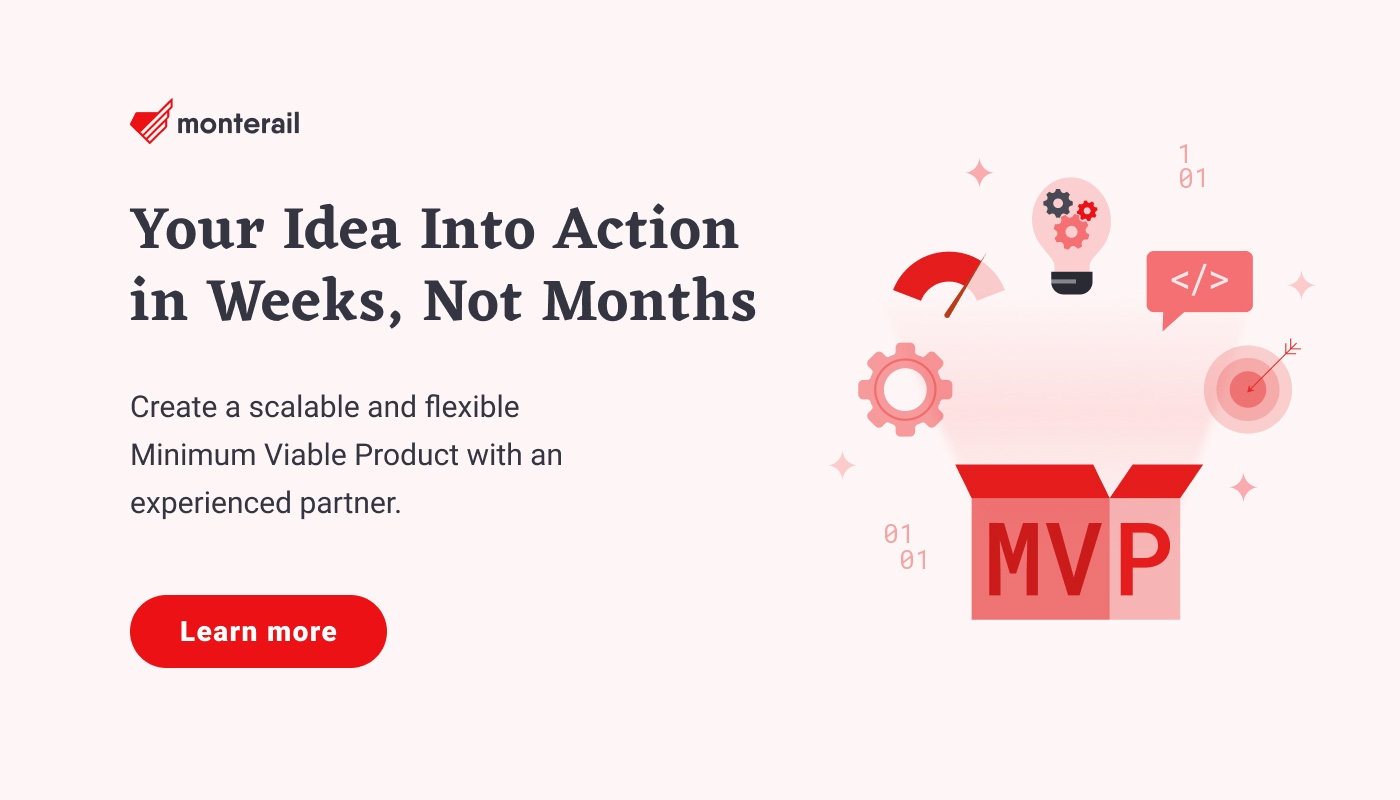The State of Vue.js Report 2025 is now available! Case studies, key trends and community insights.
Table of Contents
As a Product Manager, you may know that getting a digital product enterprise-ready is a complex process that requires restructuring how your teams work on multiple levels, including your approach to standard compliance and security, both internal and external communications, and your pricing strategy.
In our webinar from the Digital Product Journey series, Julia Szablewska, Senior Project Manager at Monterail discussed this topic with two guest speakers: John Duisberg, co-founder of Cooleaf who had a business perspective on the process, and Rafał Rothenberger, Principal Backend Engineer from our team who shared his insights on the technical details of this project.
In today’s blog post, we’re listing their advice on how to ensure that your process of going from a startup to an enterprise-grade product will be successful.
If you’d like to watch the webinar, the recording is available on our Youtube channel:
1. Commit to Being Customer-Driven
Now is the time to get as much customer-driven as possible. Onboarding and managing enterprise customers requires time and money - make sure that you can deliver on the promises that you’ve made to them, but that your future clients are also 100% committed to using your product.
Move away from the ‘build and they will come’ approach towards a more focused way of developing and deploying features that will actually help and directly apply to your paying customers.
This approach needs keeping a balance between vision-driven development and making sure that you’ll deliver value to your customers - in short: that they will get what they paid for.
Plan as much as possible before you’ll start the actual product-building work and ensure that once the contract is signed, you’re ready to release new features that your customers want and need as fast as possible.

2. Review and Rebuild Your Product
Moving into the enterprise-grade product sector may require reviewing your application from this perspective and deciding on how to rebuild it to serve a different type of customer.
Some of the existing features or UX/UI made sense when you catered for small-scale, 100+ people startups but no longer make sense if you’re onboarding a 1,000+ corporation as your client.
You may have your MVP but once you start talking to your customers, you’ve got to pivot. As Cooleaf grew as a company, we had to move towards where the market is going and where the customers are willing to pay.
3. Test and Then Test Some More
Rebuilding your product to suit your enterprise clients will also mean that you will need to work on your infrastructure as well. With your traffic likely to double or even triple almost overnight once you’ve onboarded new clients, it’s crucial to ensure that your product is ready to handle that. That’s why additional testing may be necessary to scale safely.
We had to ensure that we would be able to handle double the number of users and quadruple the traffic using low-code tests.
4. A Tight-Knit Team Is Key
While working on a product development project, it’s easy to fall into the silo trap and collaborate only with your immediate team, or focus on frontend tasks, testing, product design, and other areas as separate entities that don’t influence each other.
When you’re trying to take on a task as big as onboarding an enterprise client to your product, there’s no better time to escape this way of working and zero in on making sure that all of your team members are aligned while working towards this large goal.
In the past 3 months, during the process of getting the product enterprise-ready, we’ve realized how important documentation is to quickly onboard new team members, be able to scale our team up, or to restructure it smoothly. This is where good documentation helps a lot.
At Monterail, we’ve worked with Cooleaf for the past 12 years, so we know our ways, but even in this case, we had to start collaborating even more closely, with the development team being involved and on board with all product-related decisions and issues.
This - in turn - made both parties more proactive and effective in commuting what needs to be done, what are the risks, and how we can all work together to mitigate those.
5. Ensure Flawless Experience For All of Your Clients
Building an outstanding product is not easy, and if you have an existing database of our customers, make sure that they get the best experience as well. How to do that?
For Cooleaf, it meant diving their team into two: one group of people ensuring the reliability of the application for their current customers, and another - having a sole focus on building new features and putting all necessary processes - including those related to compliance and security - that will allow the tool to become enterprise-ready.
This way, even when the large enterprise customer was finally onboarded in March of 2023, the user experience was still smooth and disruption-free for both their existing clients and their team. Their goal here was to ensure no one from the existing user base notices any issues or disruptions to the product.
Over To You
There you have it - a summary and the top advice from our webinar on Cooleaf's journey from a small-scale startup to an enterprise-ready digital product used by over 75,000+ users.
If you’d like to learn even more about Cooleaf’s product development process and how their solution evolved throughout the past 12 years, read the case study below:

:quality(90))



:quality(90))